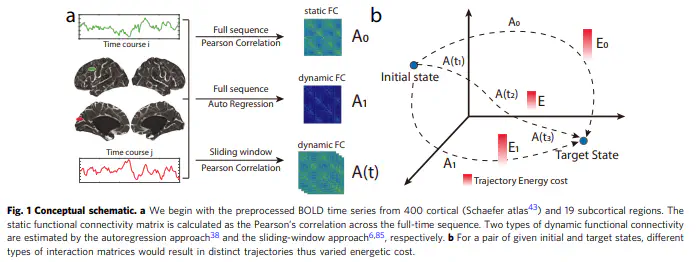Control theory illustrates the energy efficiency in the dynamic reconfiguration of functional connectivity

Abstract
The brain’s functional connectivity fluctuates over time instead of remaining steady in a stationary mode even during the resting state. This fluctuation establishes the dynamical functional connectivity that transitions in a non-random order between multiple modes. Yet it remains unexplored how the transition facilitates the entire brain network as a dynamical system and what utility this mechanism for dynamic reconfiguration can bring over the widely used graph theoretical measurements. To address these questions, we propose to conduct an energetic analysis of functional brain networks using resting-state fMRI and behavioral measurements from the Human Connectome Project. Through comparing the state transition energy under distinct adjacent matrices, we justify that dynamic functional connectivity leads to 60% less energy cost to support the resting state dynamics than static connectivity when driving the transition through default mode network. Moreover, we demonstrate that combining graph theoretical measurements and our energy-based control measurements as the feature vector can provide complementary prediction power for the behavioral scores (Combination vs. Control:t=9.41, p=1.64e−13; Combination vs. Graph:t=4.92, p=3.81e−6). Our approach integrates statistical inference and dynamical system inspection towards understanding brain networks.